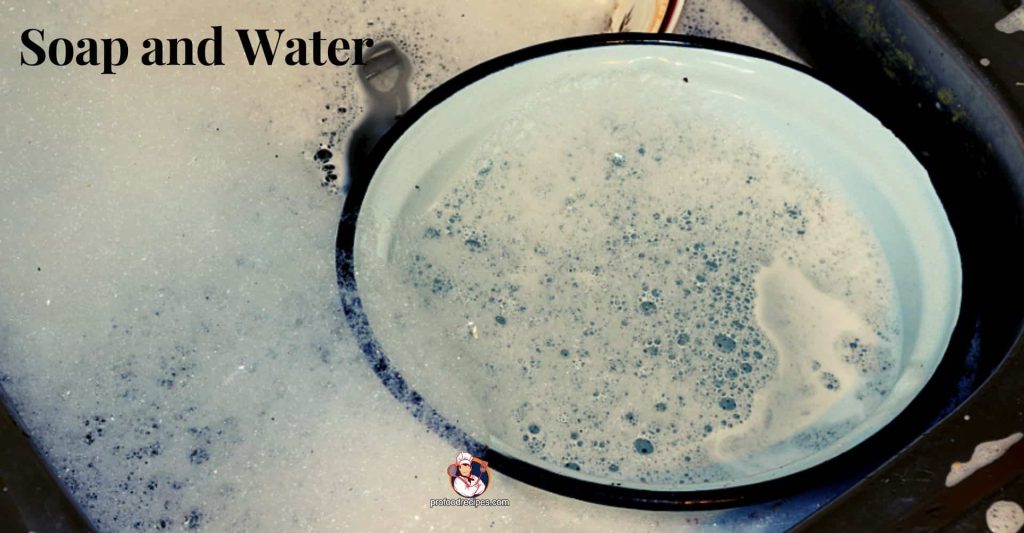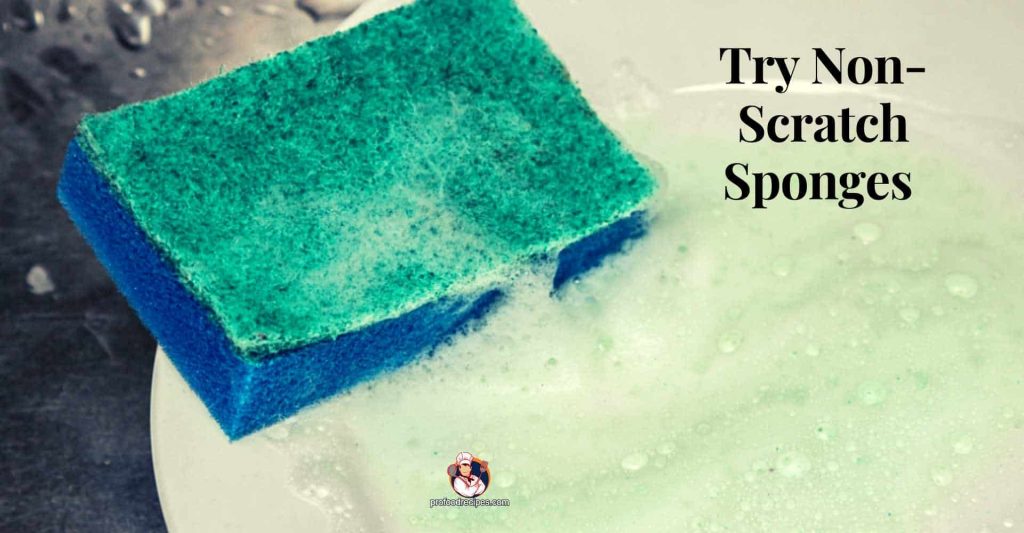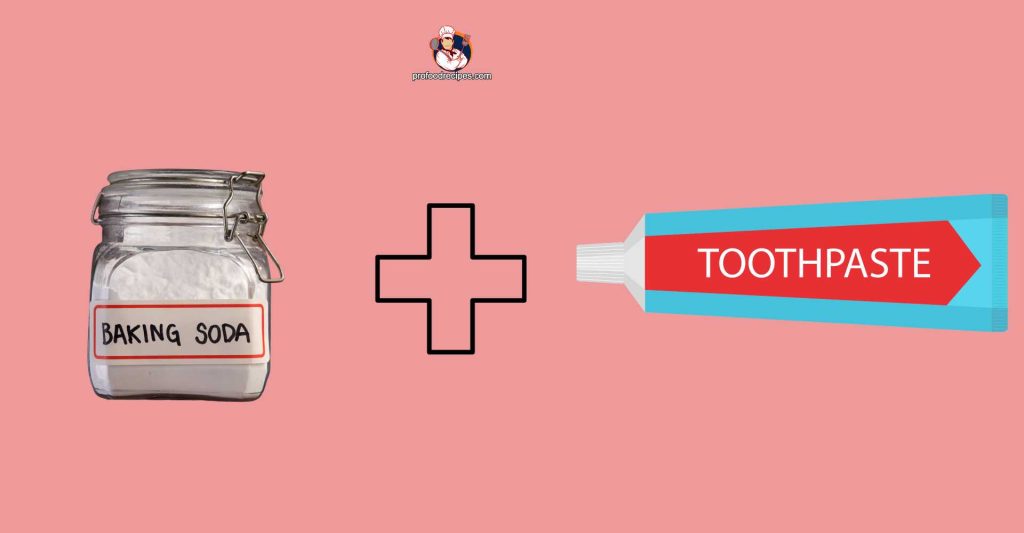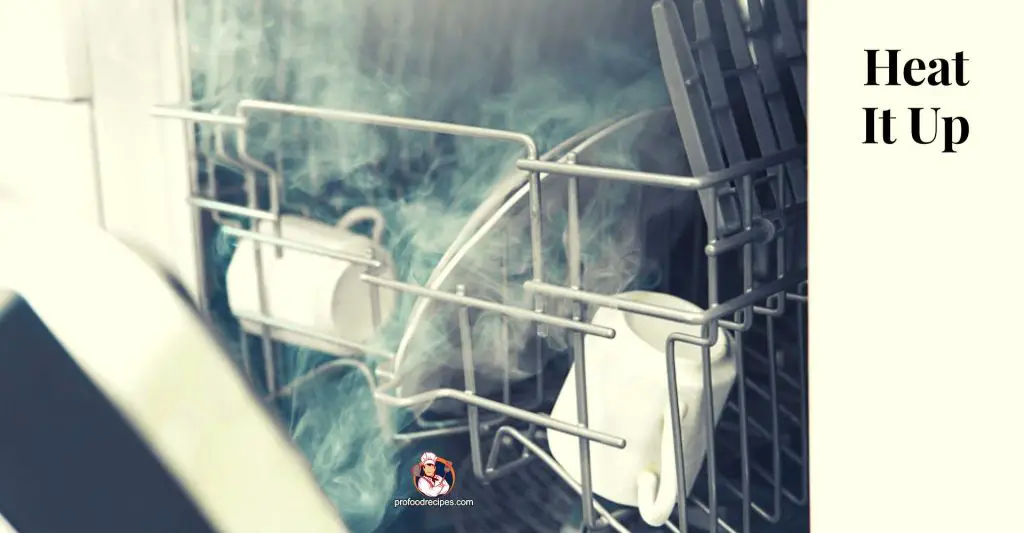Last Updated on February 18, 2023 by Amanda P. Brown
Removing cutlery marks from dishes isn’t always easy – but it doesn’t have to be difficult either! With some patience, elbow grease, and clever use of natural ingredients like toothpaste or baking soda, you can quickly restore its original shine without risking damage by using abrasive tools or harsh chemicals.
However, you can find more detailed ways how to get cutlery marks off plates in the following article. Also, you will discover some prevention methods to avoid such marks in the future.
How to Get Cutlery Marks Off Plates?
Table of Contents
Instead of spending lots of money on store-bought remedies, you may be surprised that a few easy DIY methods are enough to eliminate unsightly cutlery smudges. Below are some tips to help get those tell-tale marks off plates without damaging them:
Method 1: Soap and Water

The best approach to clean plates free of cutlery marks is using soap and water. Soak the plate in warm, soapy water for about 10 minutes, then rub the stained area gently with a soft cloth or sponge.
This can remove any dirt and debris accumulated in the crevices left by fork or spoon tines. If needed, you can use a non-abrasive scrub pad like a Scotch-Brite pad to help loosen up any stubborn grime on the dish before rinsing with clean water.
Method 2: Try Non-Scratch Sponges

You can also use a non-scratch sponge to eliminate cutlery marks on plates. These sponges are made of soft materials such as foam or microfiber, which won’t scratch your dishes when used properly.
Dip one side in warm soapy water, then gently but firmly scrub away at the affected area until the mark fades away. Rinse with clean water afterward, so all residue is wiped off completely.
Method 3: Polish with Toothpaste and Baking Soda

If gentle scrubs don’t work, you can use toothpaste or baking soda for extra cleaning power. Squeeze a dollop of toothpaste onto the dish and spread it evenly over the marked areas, then use your dampened finger to rub it into a paste before scrubbing away at the surface with a soft cloth.
Alternatively, you can create a paste out of baking soda mixed with some warm water and gently buff these areas until they disappear. Just make sure to rinse with plenty of clean water afterward.
Method 4: Heat It Up

You can try heating them for stubborn cutlery marks that just won’t budge no matter how hard you scrub.
Place your plate in a 350°F oven for about 10 minutes to bake; this will release any caked-on filth that may have solidified over time from utensil contact and provide you easy access for cleaning off those annoying scratches after cooling down again.
Read More:
Tips to Avoid Cutlery Marks on Your Plates
The following is a list of some suggestions to avoid cutlery marks on your plate:
- The easiest approach to avoid cutlery scratches is to use high-quality dinnerware that is stain- and mark-resistant.
- Invest in some high-quality 18/10 cutlery to replace your outdated set.
- Do not scrape your utensils against the plate while eating (bowl, mug, plate, whatever you may be using)
- Scratches and dents from metal are possible in the dishwasher. When filling the dishwasher, don’t stack metal utensils on top of or close to your plates.
- If you have a dish drying rack made of stainless steel, you should strive to keep your dishes from scuffing the tines of the rack.
- Avoid scrubbing dishes against other metal utensils or the sink’s edge when stacked or soaking in the sink.
- Serrated knives can leave stains on your dinnerware, so try to keep them apart.
How to Remove Metal Marks From Dishes
The following is a list of the most effective methods for removing metal stains from dishes:
- Create a solution by combining one teaspoon of water and two teaspoons of baking soda in a mixing bowl.
- Put a few drops of dish soap on the scouring pad and mix it up.
- Scrub the affected areas after applying a paste made of baking soda on them.
- Rinse with water and carry out additional washings as required.
- After you are satisfied with the item’s appearance, wash, rinse, and set it somewhere to dry.
Read More: How to Clean a Commercial Pizza Oven?
FAQs
How Do You Remove Fork Marks From Plates?
Fork marks on plates are often the result of silverware or aluminum cutlery being left there. Another cause of dishware markings is the inevitable rubbing in the sink or dishwasher. A mixture of baking soda and water can be applied to the stains using a moist sponge, rubbed in well, let to sit for a few minutes, and then washed away.
What Does Vinegar Do to Cutlery?
Giving your kitchen knives a vinegar wash can help bring back their former luster if they have begun to develop rust stains.
How Do You Get Metal Marks Off White Plates?
Marks and scratches may be left on your ceramics by cutlery and other metal items. Gloves, baking soda, gentle dish soap, and a soft cloth can get rid of these stains. Remember, never use a metal scouring pad; otherwise, it will make the marks worse than before.
How Do You Make Plates Look New?
Fix your scratched plates with some cream of tartar. A little cream of tartar can help your scratched plates seem like new. Use just as much cream of tartar as is necessary; more may always be added. Before you start, make sure the plates are clean and dry.
Final Verdict
Utensils like knives and forks can scrape or leave lasting stains on plates over time. Most dishware, especially white plates, develops unsightly smudges and stains from food with repeated uses, particularly on white-colored plates.
I hope the above article on How to get cutlery marks off plates will be helpful to you in maintaining spotless dinnerware.
You May Also Like to Read:
- How to Care for Stainless Steel Cookware?
- How to Take Care of Ants in the Kitchen?
- What is the Effect of Oven Cleaners on Kitchen Countertops?
- 26 Types of Cutlery With Pictures

